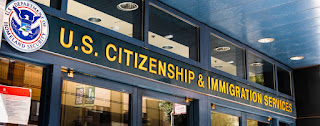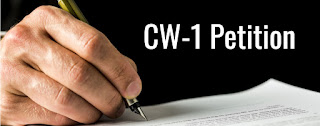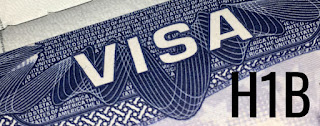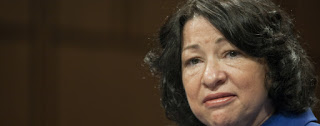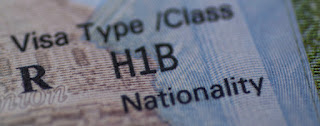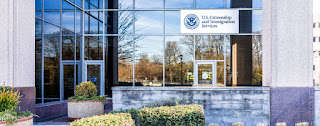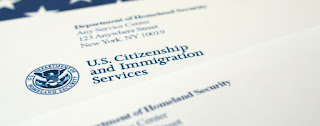Introduction
On January 9, 2020, the United States Citizenship and Immigration Services (USCIS) published a notice in the Federal Register announcing the implementation of an H1B registration process for all H1B cap-subject petitions [
PDF version — 85 FR 1176 (Jan. 9, 2020)]. All H1B cap-subject petitioners will be required to register electronically with the USCIS and pay the $10 registration fee before being eligible to properly file an H1B petition subject to the 2021 H1B cap. The registration period will run from March 1, 2020, thru March 20, 2020.
In this article, we will review the Federal Register notice regarding H1B registration for H1B petitions subject to the FY 2021 H1B cap.
Overview
The Department of Homeland Security (DHS) published a final rule establishing the H1B registration requirement on January 31, 2019. The rule required H1B cap-subject petitioners, including those eligible for the advanced degree exception, to first electronically register with the USCIS during the designated H1B registration period before filing an H1B cap-subject petition. The USCIS suspended the registration requirement for the FY 2020 cap season because the H1B registration system had not been completed yet. The USCIS is applying the H1B registration requirement to H1B petitions subject to the FY 2021 cap because the H1B registration system is ready for use.
On November 8, 2019, the DHS published a final rule amending its regulations to require a $10 fee for each registration submitted for the H1B cap selection process. We discussed the H1B registration fee in a separate post [
see blog].
H1B Registration Required for All H1B Cap-Subject Petitioners Subject to FY 2021 Cap
In order for a petitioner to file an H1B cap-subject petition, the petitioner must first electronically register with the USCIS. The registration requirement applies to all cap-subject petitioners, including those eligible for the advanced degree exemption. 8 CFR 214.2(h)(8)(iii)(A)(1).
The USCIS will not consider an H1B cap-subject petition properly filed unless it is based on a valid registration for the applicable fiscal year. 8 CFR 214.2(h)(8)(iii)(A)(1) and (D).
H1B Registration Period for FY 2021 Cap Season
The registration period for the FY 2021 H1B cap season will begin on March 1, 2020. The USCIS intends to close the initial registration period on March 20, 2020. Whether the initial registration period ultimately ends on March 20, 2020, will depend on the number of registrations that the USCIS receives. 8 CFR 214.2(h)(8)(iii)(A)(3).
If the USCIS determines that it received an insufficient number of registrations, it will determine the final registration date once it has received a sufficient number of registrations. The USCIS will announce the final end date for the initial registration period on its website.
If the USCIS determines that it is necessary to re-open the registration period, it will announce the start of the re-opened registration period on the USCIS website. 8 CFR 214.2(h)(8)(iii)(A)(3) and (7).
We will update the site with any new information about the H1B registration period as it becomes available.
H1B petitioners should work under the assumption that the registration period will end on March 20, 2020.
How to Register
The Federal Register notice on H1B registration stated that the USCIS would post instructions for petitioners seeking to register on its website. The USCIS posted instructions on February 21, 2020 [
PDF version].
A petitioner or representative must have a USCIS account in order to submit an H1B registration.
Representatives use the same type of representative account that is already available. A representative may use an existing representative account if he or she has already created one.
Prospective petitioners submitting their own H1B registrations (U.S. employers and U.S. agents, collectively known as “registrants”) are required to use a new “registrant” account. The USCIS made registrant accounts available on February 24, 2020.
Representatives may add clients to their representative accounts at any time.
Neither representatives nor registrants will be able to enter beneficiary information, submit registrations, or pay the $10 non-refundable registration fee for each beneficiary until March 1, 2020.
Account creation and registration for both representatives and registrants will be available throughout the registration period. As we noted above, the initial registration period begins on March 1, 2020, and is expected to end on March 20, 2020.
Both representatives and registrants may set up accounts for use in later H1B cap seasons.
A petitioner or authorized representative is required to electronically submit a separate registration request naming each individual it seeks to petition for a cap-subject H1B visa. Petitioners will be able to register multiple prospective beneficiaries in a single online session.
Petitioners are only permitted to submit one registration per beneficiary each fiscal year. 8 CFR 214.2(h)(8)(iii)(A)(2). If a petitioner submits multiple registrations on behalf of a single beneficiary, the USCIS will consider all registrations filed by the petitioner for that beneficiary for that fiscal year to be invalid.
Registration Selection
The USCIS will send notices electronically to all registrants with selected H1B registrations that they are eligible to file an H1B cap-subject petition on behalf of the individual named in the electronic notice within the filing period on the notice. 8 CFR 214.2(h)(8)(iii)(C).
The USCIS will add the notifications to registration accounts. The account holder who submitted the registration will receive notification from the USCIS via email or text message stating than an action has been added to the account. The account holder will have to log in to see the full notice.
The USCIS intends to notify registrants with selected registrations from the initial registration period no later than March 31, 2020.
Conclusion
The H1B registration rule is a new step in the H1B cap season filing process. Petitioners must remember to file registrations for prospective beneficiaries within the designated registration period. All information regarding H1B registration is available on the USCIS website. Petitioners should consult with an experienced immigration attorney in the area of work visas for guidance throughout the H1B process.
Please visit the
nyc immigration lawyers website for further information. The Law Offices of Grinberg & Segal, PLLC focuses vast segment of its practice on immigration law. This steadfast dedication has resulted in thousands of immigrants throughout the United States.

